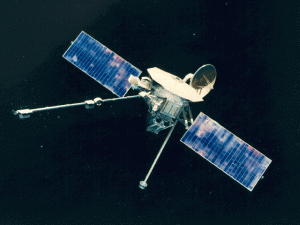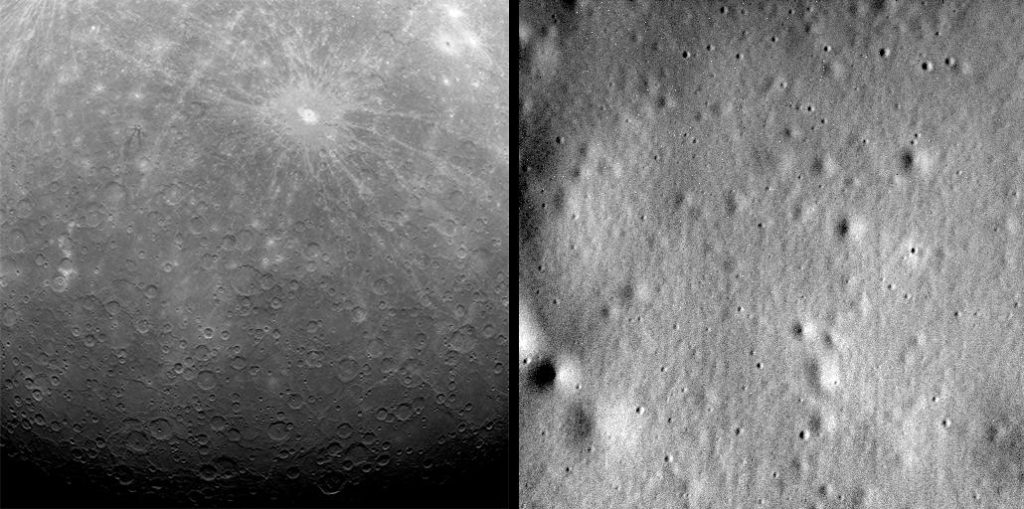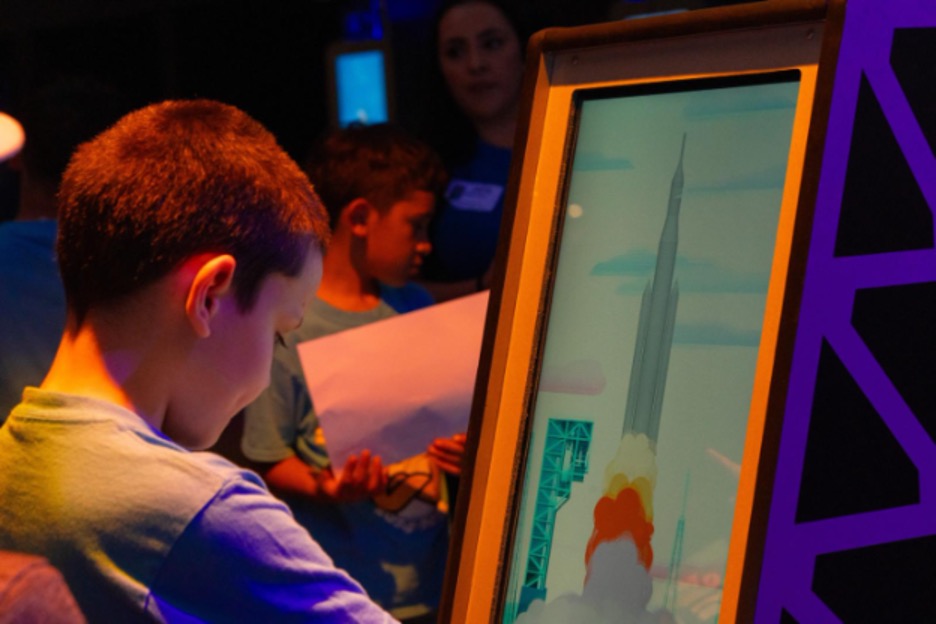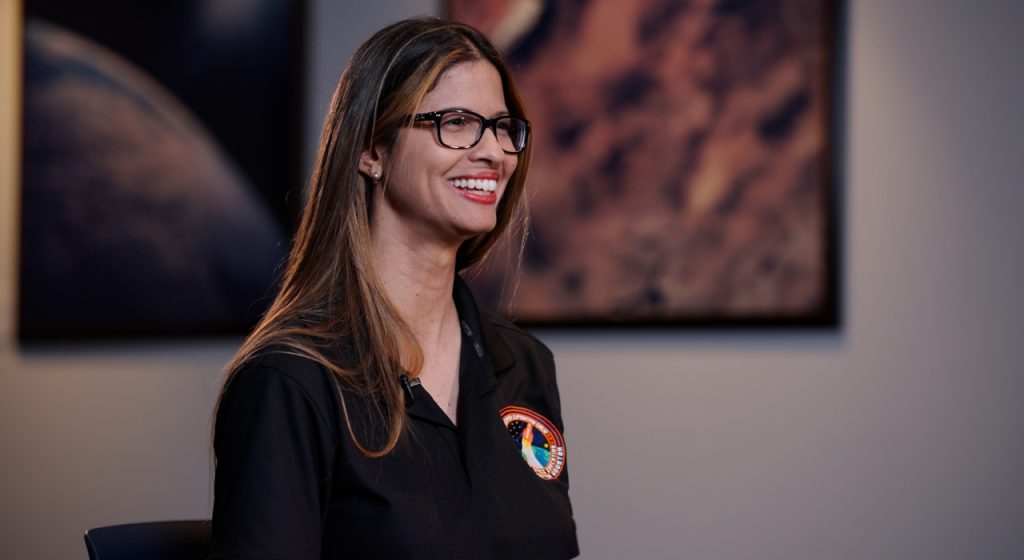How well do you know your astronomical neighborhood? Let’s go on a trip through our solar system and explore the weird, the wild, and the beautiful all around us. Today, we are learning all about Mercury.

Where is it?
Mercury is the first planet of our solar system, sitting an average of 35 million miles from the sun and an average of 48 million miles from Earth.
What’s up with the name?

Mercury is named after the Roman god of lots of things, including commerce, communication, travelers, and messages. He also guided the dead to the afterlife.
Like his Greek counterpart Hermes, Mercury was often depicted with a winged helmet, winged shoes and a staff.
Since Mercury was considered the god of luck and trickery, it’s understandable how his name could be transformed into the English word “mercurial,” meaning changeable or fickle.
The element mercury is also named after the Roman god, but unfortunately none of our exploration of Mercury the planet has shown whether or not there is mercury the element on its surface.
Who “discovered” it?
It is not known exactly when the planet was first discovered – although it was first observed through telescopes in the seventeenth century by astronomers Galileo Galilei and Thomas Harriot.
What’s it made of?
Mercury’s structure is a mix of metals and silica. It has a large metallic core with a radius of about 1,289 miles (2,074 kilometers), about 85 percent of the planet’s radius. There is evidence that it is partly molten, or liquid. Mercury’s outer shell, comparable to Earth’s outer shell (called the mantle and crust), is only about 400 kilometers (250 miles) thick.
Mercury’s surface resembles that of Earth’s moon, scarred by many impact craters resulting from collisions with meteoroids and comets. Craters and features on Mercury are named after famous deceased artists, musicians or authors, including children’s author Dr. Seuss and dance pioneer Alvin Ailey.

Can we live there?
Never say never, but Mercury may be the most inhospitable planet in the entire solar system. Because of its proximity to the Sun, day temperatures can reach highs of 800°F (430°C). Without an atmosphere to retain that heat at night, temperatures can dip as low as -290°F (-180°C).
Instead of an atmosphere, Mercury possesses a thin exosphere made up of atoms blasted off the surface by the solar wind and striking meteoroids. Mercury’s exosphere is composed mostly of oxygen, sodium, hydrogen, helium and potassium.
So for humans to survive there, a habitat would need to survive and regulate those extreme temperatures.
How long is a year there? What about a day?
You know how, on some afternoons, an hour can seem to last for days? On Mercury, one day can last for almost a year.
Mercury completes an orbit of the sun in 88 Earth days, by far the fastest planet in the solar system. However, it’s own “day” lasts much longer than an Earth day. In fact, it takes 59 Earth day for Mercury to rotate on its axis once.
Has NASA sent any missions there
NASA’s Mariner 10 was the first mission to explore Mercury. Mariner 10 also studied Venus while using the planet’s gravity to modify its speed and trajectory, enabling it to reach Mercury. Launched on Nov. 3, 1973, Mariner 10 was 1,100 pounds (502.9 kilograms) and was the first spacecraft to use the gravity of one planet to reach another.
Mariner 10 made its first flyby of Mercury on March 29, 1974 and made two more flybys over the next year. It studied the magnetosphere, took photos of the planet’s surface, and discovered that the planet did not have an atmosphere.
Mariner 10 returned more than 2,700 photos covering nearly half of the planet’s surface.
NASA’s MESSENGER (MErcury Surface, Space ENvironment, GEochemistry and Ranging) was the first to orbit the innermost planet. Launched on Aug. 3, 2004, MESSENGER reached orbit around Mercury on March 17, 2011. It stayed orbiting the planet until its mission was completed on April 30, 2015.


During this time, MESSENGER was able to provide compelling support for the long-held hypothesis that Mercury harbors abundant water ice and other frozen volatile materials in its permanently shadowed polar craters.
But the tilt of Mercury’s rotational axis is almost zero – less than one degree – so there are pockets at the planet’s poles that never see sunlight.
Scientists continue to study the images and data returned by MESSENGER, discovering in 2017a broad valley that’s more than 620 miles (1,000 kilometers) long. About 250 miles (400 kilometers) wide and 2 miles (3 kilometers) deep, Mercury’s great valley is smaller than Mars’ Valles Marineris, but larger than North America’s Grand Canyon and wider and deeper than the Great Rift Valley in East Africa.
Can I see it from here?
Mercury is a “bright” planet, meaning it is easily visible without a telescope or lens and, thus, has been seen by humans for millennia. In 2021, Mercury will be brightest and easiest to spot in the evening sky between May 3 and May 24; brightest and easiest to spot in the morning sky between October 18 and Nov. 1.
Are there any pretty pictures of it?
Of course! Here are a few of the best photos of Mercury.
[envira-gallery id=”47648″]







